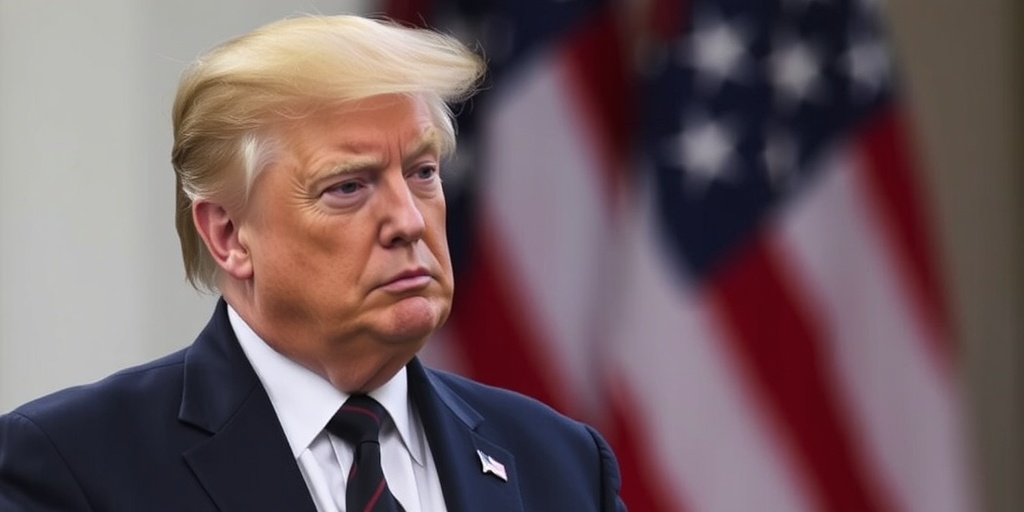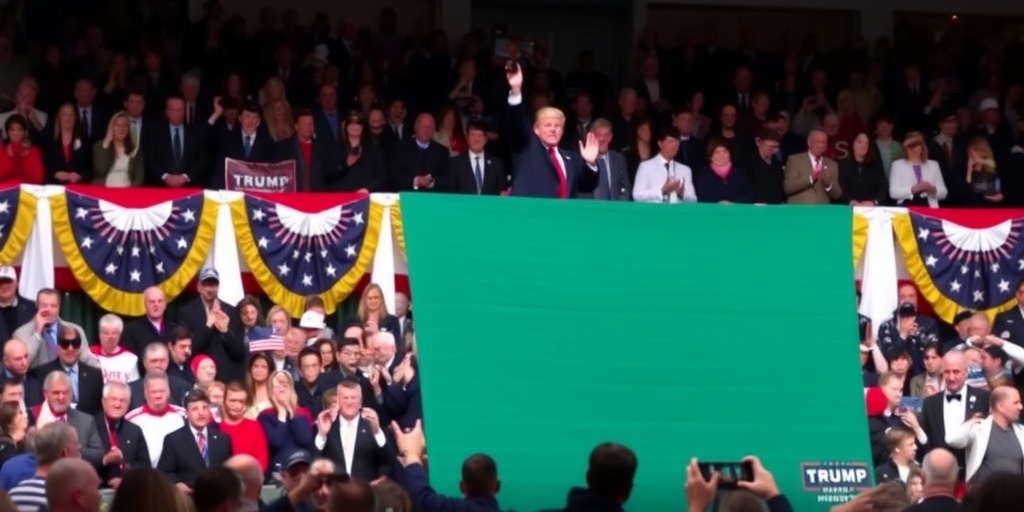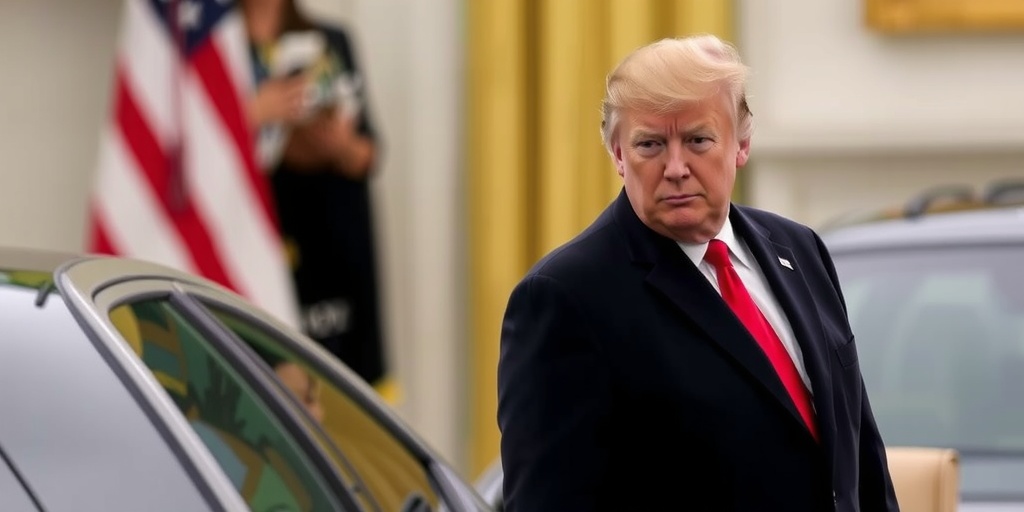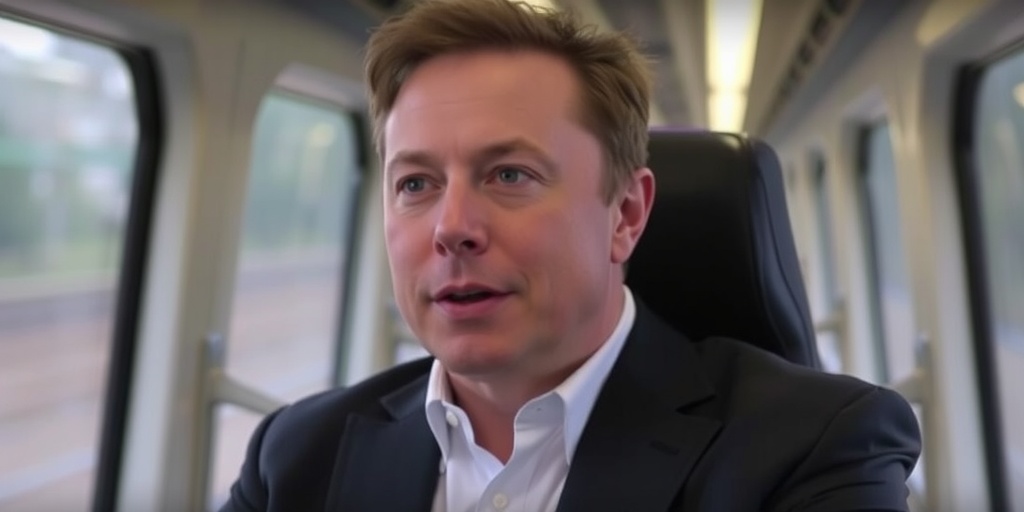Now Reading: Trump Takes Steps to Limit Elon Musk’s Influence
-
01
Trump Takes Steps to Limit Elon Musk’s Influence
Trump Takes Steps to Limit Elon Musk’s Influence

Title: Trump’s Workforce Reduction Strategy Takes a New Direction
In a recent announcement, President Trump outlined the next phase of his strategy to reduce the federal workforce, signaling a shift towards a more selective approach described as using a “scalpel” instead of a “hatchet.” This new directive, revealed during a Thursday meeting with his cabinet, appears to address growing concerns among Republicans about the aggressive workforce cuts spearheaded by Elon Musk, his appointed “jobs-cutting guru.”
During the meeting, President Trump instructed his cabinet secretaries to collaborate with Musk while reassuring agency leaders that they would have a role in deciding personnel cuts. The administration’s intention is to retain valuable employees while still pursuing cuts to the federal workforce, reflecting the unease felt by some within the Republican party toward the sweeping actions taken by Musk.
Reports indicate that several cabinet members have expressed apprehensions about Musk’s hasty “ready, fire, aim” strategy for workforce reductions. The chaotic nature of this approach has captured media attention and raised alarm within government circles, with some warning that indiscriminate layoffs could alienate Trump’s voter base, which includes federal workers and veterans.
Privately, allies of Trump have pointed out the potential backlash from his core supporters, many of whom rely on government jobs, Social Security, and other federal benefits. With increasing hostility towards such cuts during town hall meetings, some members of Congress have reportedly been advised against holding these events in person due to the backlash from constituents.
The administration has also faced legal challenges related to Musk’s activities at the Department of Government Efficiency, the agency tasked with overseeing the federal overhaul. Despite these challenges, Musk’s team continues to exert substantial influence, reportedly forcing their way into various federal buildings and issuing directives with significant authority.
In an effort to manage these controversies, President Trump publicly lauded Musk’s team, claiming they have executed their mandate effectively. However, many have raised concerns over the mass firings and elimination of prominent watchdog positions that play crucial roles in overseeing government efficacy.
Many federal workers, particularly probationary employees, have found themselves caught in the crosshairs of this aggressive reduction strategy. Although these workers may be relatively new, they are often highly skilled and were hired to fulfill essential roles within their agencies. The swift firings, labeled by some as illegal, have not only caused disruption within agencies but have also led to confusion and uncertainty among personnel. In some instances, workers with significant responsibilities, including those involved in maintaining national security, have been swiftly reinstated after their abrupt termination.
As the administration moves forward, Trump has mandated that agencies submit their personnel reduction plans by March 13, anticipating that adjustments will be made as the restructuring process unfolds. He emphasized the necessity to keep competent workers, urging his cabinet members to retain all essential personnel.
The upcoming phase of workforce reductions, termed a “reduction in force,” will be a meticulous process requiring agencies to exercise careful consideration in determining which roles are essential. Trump conveyed to reporters that he was committed to ensuring that valuable employees were not disproportionately impacted by layoffs.
“We need to keep the people who are doing a good job,” Trump stated, reinforcing the idea that the reductions are aimed at improving government function rather than indiscriminate cuts. He reiterated that the goal of his administration is to cleanse the bureaucracy of inefficiency, fraud, and other issues, despite lacking substantial evidence to support claims regarding the existence of deceased individuals receiving federal payments.
As the Trump administration navigates this contentious path of federal workforce reduction, the implications for agency functionality, employee morale, and public perception are likely to be profound, raising critical questions about the balance between efficiency and the value of human capital within government operations. The coming weeks will be pivotal as agencies prepare their plans and engage in discussions about the future of their workforces under this new directive.
Stay Informed With the Latest & Most Important News
Previous Post
Next Post
-
 01New technology breakthrough has everyone talking right now
01New technology breakthrough has everyone talking right now -
 02Unbelievable life hack everyone needs to try today
02Unbelievable life hack everyone needs to try today -
 03Fascinating discovery found buried deep beneath the ocean
03Fascinating discovery found buried deep beneath the ocean -
 04Man invents genius device that solves everyday problems
04Man invents genius device that solves everyday problems -
 05Shocking discovery that changes what we know forever
05Shocking discovery that changes what we know forever -
 06Internet goes wild over celebrity’s unexpected fashion choice
06Internet goes wild over celebrity’s unexpected fashion choice -
 07Rare animal sighting stuns scientists and wildlife lovers
07Rare animal sighting stuns scientists and wildlife lovers





















